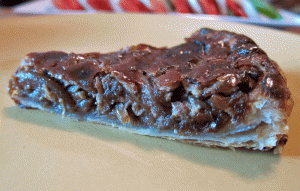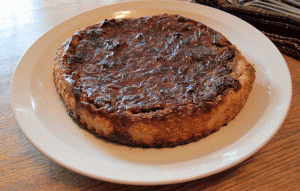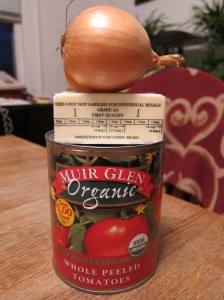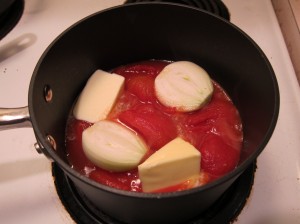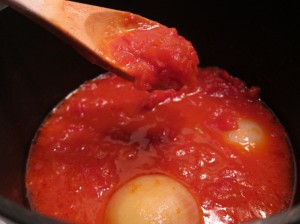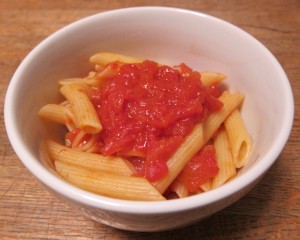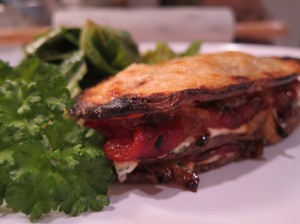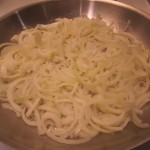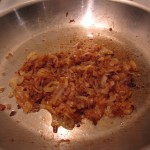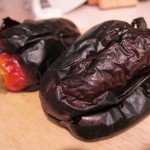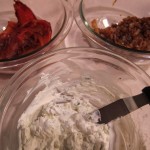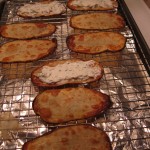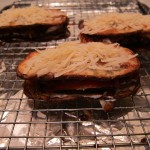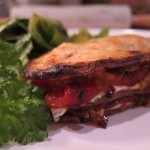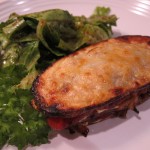 The past four days in the northeast have been particularly dreary. It has been overcast and wet, and much cooler than it should be in early autumn. Weather like this screams for comfort food that has been cooking for hours, filling the house with its fragrance and warming the soul, and what could be better on a Sunday than a rich, meaty Bolognese?
The past four days in the northeast have been particularly dreary. It has been overcast and wet, and much cooler than it should be in early autumn. Weather like this screams for comfort food that has been cooking for hours, filling the house with its fragrance and warming the soul, and what could be better on a Sunday than a rich, meaty Bolognese?
One of the most important things a good cook knows is how to build flavor. You’ll hear comments on this all the time on shows like “Top Chef.” How many times have we heard, “He doesn’t know how to build flavor,” or “I wish there was some acid,” or “This is the perfect balance of sweet and savory.” There are several ways to build flavor, often used in combination, such as reducing, salting, searing, and toasting. This Bolognese uses these techniques, but above all is the technique of browning. This should probably be called “Brown Bolognese.”
Chef Anne Burrell was one of my culinary school chef-instructors, and the best teacher we had when it came to technique and Italian cuisine. It is to her recipes I turn when I want to make great pasta. And so I used her recipe for Bolognese.
Bolognese Recipe:
I’ve edited this a bit from the original. Click here to see the recipe on the Food Network’s website.
Ingredients
- 1 large onion or 2 small, cut into 1-inch dice
- 2 large carrots, cut into 1/2-inch dice
- 3 ribs celery cut into 1-inch dice
- 4 cloves garlic
- Extra-virgin olive oil, for the pan
- Kosher salt
- 3 pounds ground chuck, brisket or round or combination
- 2 cups tomato paste
- 1 750ml bottle (about 3.5 cups) hearty red wine
- Water
- 2 bay leaves
- 1 bunch thyme and 1 rosemary, tied in a bundle
- 1 or 2 rinds of Parmigiano cheese (optional)
- 1 pound pasta of choice
- 1/2 cup grated Parmigiano-Reggiano
- High quality extra-virgin olive oil, for finishing
Directions:
1. In a food processor, puree onion, carrots, celery, and garlic into a coarse paste. In a large pan over medium heat, coat pan with oil. Add the pureed veggies and season generously with salt. Bring the pan to a medium-high heat and cook until all the water has evaporated and they become brown, stirring frequently, about 15 to 20 minutes.
2. Add the ground beef and season again generously with salt. Cook 15 to 20 minutes until beef is brown.
3. Add the tomato paste and cook until brown about 4 to 5 minutes, or however long it takes for the tomato paste to brown.
4. Add the red wine. Cook until the wine has reduced by half, another 4 to 5 minutes. Make sure it is reduced.
5. Add water to the pan until the water is about 1 inch above the meat. Toss in the bay leaves, the bundle of thyme/rosemary, and the Parmigiano rinds (if using), and stir to combine everything. Bring to a boil and reduce to a simmer, stirring occasionally. As the water evaporates you will gradually need to add more, about 1 to 2 cups at a time. Don’t be shy about adding water during the cooking process, you can always cook it out. This is a game of reduce and add more water. If you try to add all the water in the beginning you will have boiled meat sauce rather than a rich, thick meaty sauce. Stir and TASTE frequently. Season with salt, if needed. Simmer for 3 1/2 to 4 hours.
Note on pasta: When you cook your pasta, retain some of the pasta cooking liquid. Once you’ve added your pasta to the ragù, if you feel the pasta is too dry (it should be glistening somewhat), add a bit of the cooking water. The water you cooked your pasta in will have retained some of the pasta’s starch and will keep your sauce saucy, rather than watering it down. Drizzle a bit of olive oil and add Parmigiano-Reggiano on top. For this sauce, I’ve become fond of Barilla’s Campanelle. It has a lovely fluted shape that holds the sauce well.
How To Build Big Bolognese Flavor:
Beef: I strongly recommend rather than buying packaged “ground beef,” visit your butcher and ask him or her to grind particular cuts. It makes a difference in flavor and quality. For this recipe I used about 1 pound of ground bottom round and 2 pounds of ground chuck steak. One could also use ground bison or turkey. Some cuts have more fat, almost all have different flavors and textures. It’s worth exploring and discovering your personal preferences.
Herbs: In Chef Burrell’s recipe, she uses only thyme and bay. I add some rosemary simply because I like it. Some Bolognese recipes add nutmeg. It’s entirely up to the chef what flavors they want to add to their pots.
Wine: It is not necessary, but I like to use wine from the region of whatever region-specific dish I am cooking. One popular varietal from the Bologna region is Sangiovese, which is the main component of Chianti. Thus, I used Chianti for this recipe. This is merely a persnickety habit of mine, as I believe recipes from a particular region should use ingredients from the region. But whatever hearty, inexpensive red you can get your hands on will work just as well. Never break the bank buying wine you’ll be cooking with. Once you’ve concentrated the wine with the other flavors and cooked the alcohol out, you’ll barely be able to tell the difference whether you’ve used Italian Chianti or California Merlot.
Cheese Rind: Chef Burrell’s recipe does not note this, but I find that adding a rind or two of Parmigiano to a pot of soup or sauce adds a rich dimension. Nearly everyone who cooks has rinds floating around in the bottom of their cheese bins (and if they’re moldy, just cut the mold off). It’s not a crime if you don’t use it, but adding it is divine.
Techniques:
In step #1 you’ll be browning the aromatics. You’ll want a “crud” (or fond) to form in the bottom of your pan, thus you should use a steel or ceramic pan, not non-stick. The crud will darken until it looks nearly burnt. This is going to add flavor to your Bolognese! When browning the aromatics, take your time. For me it took nearly 30 minutes to get all the water out and get the vegetables to a deep brown color. You could keep a tiny bit of the vegetable paste uncooked to the side to see how the color changes over time. Remember, you want to brown the paste.
In step #2 you’ll be browning the beef. As the beef releases fat, you’ll be able to start scraping up the crud that formed earlier from the vegetables. Again, brown the beef, don’t gray it. It should be the color of something you’d want to eat, not something underdone.
In step #3 you’ll be browning the tomato paste. You’ll notice it’s a bright red when you add it (again, you could leave some raw to the side to get a sense of where you started). Brown, brown, brown. The tomato paste should not be at all red when you get to the next step.
In step #4 you’ll be reducing the wine. Reducing concentrates flavors. If you don’t reduce the wine, you’ll wind up with a very nice wine sauce with beef, but what you want is a meaty sauce with the richness of wine in the background. Again, this takes time. Depending on the heat of your pan and its depth, this might take four minutes or it could take longer. Don’t rush.
In step #5 you’ll add herbs and water, beginning the process of the long simmer, concentrating the beef, tomato, wine, and herbal flavors even further. Again, depending on heat and depth, you may wind up adding water more or less often, but make sure you add and reduce, add and reduce. Don’t add too much water. Chef Burrell’s recipe says you’ll add 2 or 3 cups at a time. I prefer to add less water more often, as I don’t want to boil the meat.
You’ll want the meat to be soft and unctuous and become the messenger of the sweetness of the aromatics, the acid of the tomato, and the earthiness of the cheese and herbs. Your house will be ten degrees warmer than the thermostat says, just from the aroma. I recommend eating while wearing pajamas and slippers.
